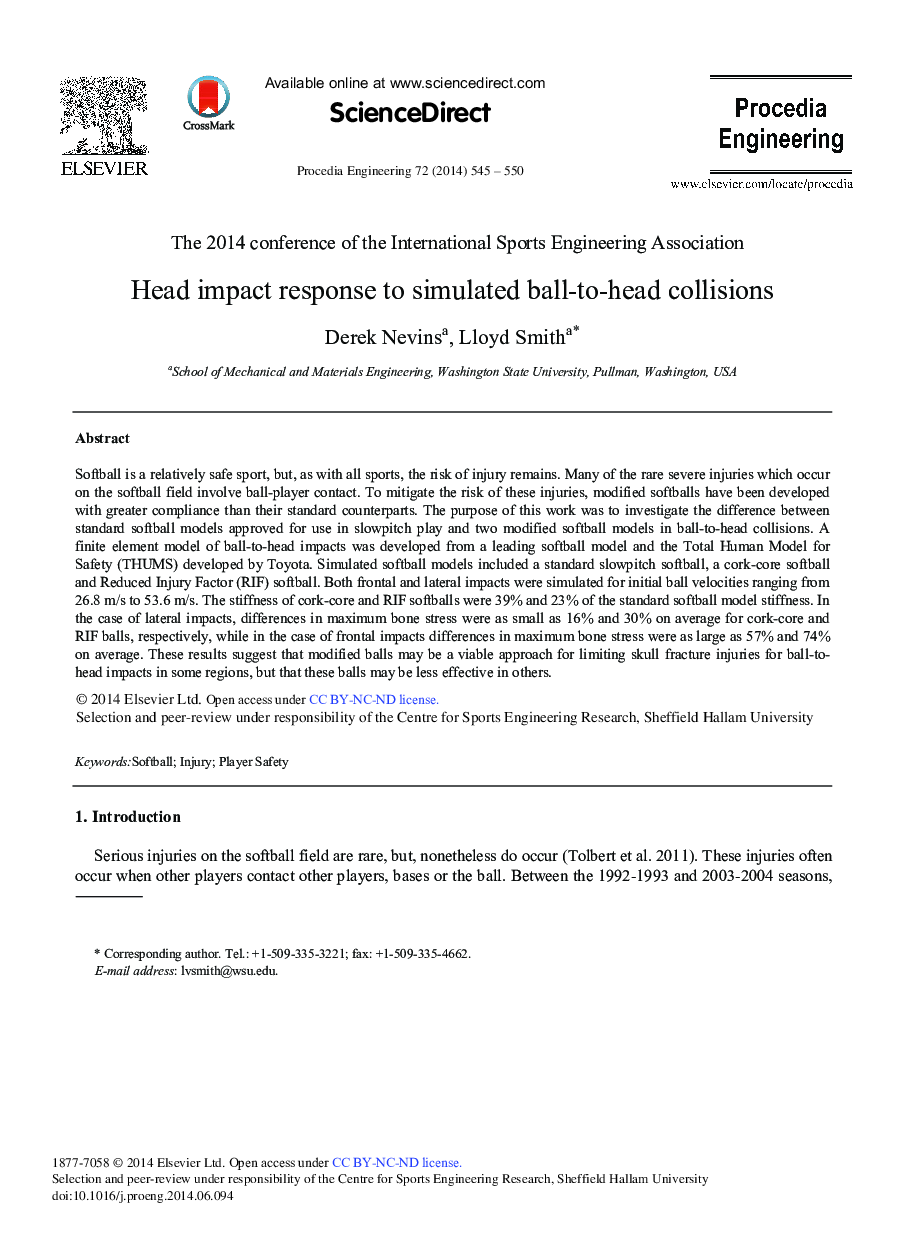| Article ID | Journal | Published Year | Pages | File Type |
|---|---|---|---|---|
| 859007 | Procedia Engineering | 2014 | 6 Pages |
Softball is a relatively safe sport, but, as with all sports, the risk of injury remains. Many of the rare severe injuries which occur on the softball field involve ball-player contact. To mitigate the risk of these injuries, modified softballs have been developed with greater compliance than their standard counterparts. The purpose of this work was to investigate the difference between standard softball models approved for use in slowpitch play and two modified softball models in ball-to-head collisions. A finite element model of ball-to-head impacts was developed from a leading softball model and the Total Human Model for Safety (THUMS) developed by Toyota. Simulated softball models included a standard slowpitch softball, a cork-core softball and Reduced Injury Factor (RIF) softball. Both frontal and lateral impacts were simulated for initial ball velocities ranging from 26.8 m/s to 53.6 m/s. The stiffness of cork-core and RIF softballs were 39% and 23% of the standard softball model stiffness. In the case of lateral impacts, differences in maximum bone stress were as small as 16% and 30% on average for cork-core and RIF balls, respectively, while in the case of frontal impacts differences in maximum bone stress were as large as 57% and 74% on average. These results suggest that modified balls may be a viable approach for limiting skull fracture injuries for ball-to- head impacts in some regions, but that these balls may be less effective in others.
